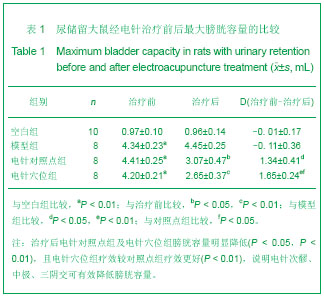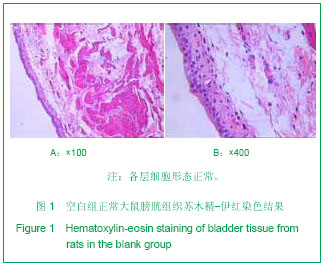| [1] |
Fei Jing, Zheng Hongdi, Yu Liya, Li Leiji.
Involvement of GDNF/PI3K/AKT pathway in promoting facial
nerve regeneration using electroacupuncture in a rabbit model of facial nerve
crush injury
[J]. Chinese Journal of Tissue Engineering Research, 2020, 24(7): 1094-1100.
|
| [2] |
Wu Fan, Xu Quan, Zhou Binbin, Wei Weibing, Wang Zhu, Yan Chaolang.
Electroacupuncture stimulation of Foot-Yangming Stomach Meridian regulates mRNA and protein expression of Bax and Bcl-2 in spinal cord injury rats
[J]. Chinese Journal of Tissue Engineering Research, 2020, 24(26): 4169-4175.
|
| [3] |
Liu Huimin, Leng Jun, Guo Wen, Fang Xiaolei, Zhang Chen, Wei Fangyue.
The rules of acupoint selection in the treatment of neurogenic bladder after spinal cord injury with acupuncture and moxibustion: based on data mining technology
[J]. Chinese Journal of Tissue Engineering Research, 2020, 24(26): 4237-4242.
|
| [4] |
Zhang Jinhuan, Chen Yirong, Lan Kai, Hu Liyu, Yu Haibo.
Network meta-analysis on effectiveness of fire needle, warm
acupuncture, and electroacupuncture in the treatment of knee osteoarthritis
[J]. Chinese Journal of Tissue Engineering Research, 2020, 24(18): 2945-2952.
|
| [5] |
Zhang Hongsheng, Wei Weibing, Zhou Binbin, Cui Junwu, Li Zhenxing, Wang Yongqing.
Effect of electroacupuncture intervention on expression of
hypoxia-inducible factor-1 alpha and vascular endothelial growth factor in
injured segments of rats with spinal cord injury
[J]. Chinese Journal of Tissue Engineering Research, 2020, 24(11): 1701-1707.
|
| [6] |
Chen Huijing, Chen Yun, Deng Yuer, Gan Yanling, Zhan Wengang, Tan Qijia, Xie Caijun, Li Cong, Zhang Zhiqiang.
Short- and long-term effects of olfactory ensheathing cells in the treatment of chronic spinal cord injury: a meta-analysis
[J]. Chinese Journal of Tissue Engineering Research, 2019, 23(9): 1468-1476.
|
| [7] |
Han Jian.
Post-stroke dysarthria treated by acupuncture combined with speech-language training: bibliometric analysis and verification of clinical efficacy
[J]. Chinese Journal of Tissue Engineering Research, 2019, 23(7): 1013-1017.
|
| [8] |
Wei Weibing1, Zhou Xiangxing1, Zhou Binbin2, Li Yijun1, Zou Zhilong1, Yang Hui1 .
Evaluation of lower limb function in rat models of spinal cord injury at different segments
[J]. Chinese Journal of Tissue Engineering Research, 2019, 23(7): 1073-1077.
|
| [9] |
Wei Weibing, Zou Zhilong, Zhou Binbin, Li Bolin, Qin Jingyu, Feng Zhenfen, Li Jiannan, Ye Liangying,Wu Rongmi.
Selection of injury segments in a rat model of spinal cord injury: network meta-analysis
[J]. Chinese Journal of Tissue Engineering Research, 2019, 23(4): 650-656.
|
| [10] |
Liu Tong, Yu Jiani, Zou Dehui, Kuang Weichuan, Wang Xiaoyin, Wen Xi, Jiang Ye, Qiu Xiaojia, Zeng Yao, Liu Yue.
Regulation of miRNA206/histone deacetylase 4 by electroacupuncture promotes myogenic differentiation during multifidus muscle repair
[J]. Chinese Journal of Tissue Engineering Research, 2019, 23(33): 5341-5346.
|
| [11] |
Pan Weibin, Lin Xiaomin, Fan Xiao.
Electroacupuncture regulates activation of astrocytes and microglia after spinal cord injury
[J]. Chinese Journal of Tissue Engineering Research, 2019, 23(29): 4675-4680.
|
| [12] |
Deng Guiying1, 2, Zeng Gaofeng3, Cen Zhongxi1, Gao Yunbing1, Cao Baichuan1, Huang Jianhua1, Zong Shaohui1 .
Effect of miRNA-136-5p on inflammatory factors in rat models of acute spinal cord injury
[J]. Chinese Journal of Tissue Engineering Research, 2019, 23(15): 2397-2402.
|
| [13] |
Huang Jianhua1, Zeng Gaofeng2, Cen Zhongxi1, Deng Guiying1, Gao Yunbing1, Zong Shaohui1 .
Changes of cytokines in peripheral blood within 48 hours after acute spinal cord injury
[J]. Chinese Journal of Tissue Engineering Research, 2019, 23(15): 2409-2414.
|
| [14] |
He Zhijiang, Zhu Lei, Cheng Shixiang, Huang Kui, Chen Cao, Sun Minglin.
Neurotrophin-3 modified hyaluronan-methylcellulose hydrogel promotes neurological function in rats with spinal cord injury
[J]. Chinese Journal of Tissue Engineering Research, 2019, 23(14): 2202-2207.
|
| [15] |
Cheng Jianping, Li Hua, Li Xiongjie.
Bone marrow mesenchymal stem cell transplantation combined with Lindera glauca leaf extract attenutes inflammation after spinal cord injury
[J]. Chinese Journal of Tissue Engineering Research, 2019, 23(13): 1975-1981.
|





